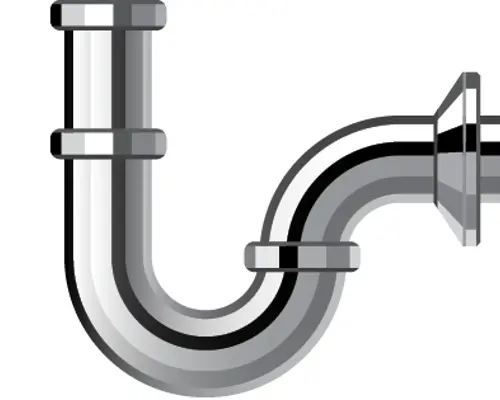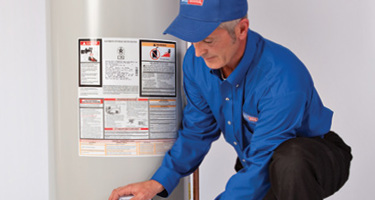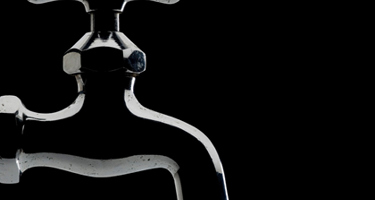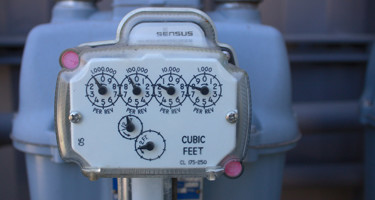
Have you ever heard your plumber mention a P-trap and wondered, “What is a P-trap?” Understanding this essential plumbing component can reduce the risk of needing plumbing repairs or dealing with frustrating clogs; At ARS/Rescue Rooter, we believe in empowering homeowners with the knowledge to maintain their plumbing systems effectively.
In this guide, you’ll learn everything you need to know about P-traps, including how they work, how to install them, and why proper maintenance is crucial. By the end, you’ll have the knowledge to protect your home from many common plumbing issues.
Need assistance with a P-trap or another plumbing issue? Contact us now at 866-399-2885 for help.
What Is a P-Trap?
Sewage waste systems produce pretty putrid odors, and some of them can even be dangerous. But have you ever wondered how your home stays protected from these foul fumes? A P-trap is a U-shaped pipe found beneath sinks, showers, and other plumbing fixtures. Its design helps to hold small amounts of water, creating a barrier that prevents sewer gasses from entering your living spaces, keeping your home safe and odor-free.
A P-trap consists of a few key components:
- Curved Section: This part of the pipe holds water, forming the essential seal against sewer gasses.
- Tailpiece and Drain Extension: The tailpiece is where water from your sink or fixture enters the P-trap, and the drain extension connects to the rest of your plumbing system.
You might encounter different types of P-traps, such as:
- Standard P-Trap: Most commonly used in residential plumbing systems.
- Bottle Traps: Often used in spaces where a standard P-trap might not fit, such as tight spaces under some sinks.
The trap may also be made from plastic for cost-effectiveness or metal for added durability.
If you’re experiencing plumbing problems, ARS/Rescue Rooter is here to help. Call us at 866-399-2885 or schedule service online to ensure everything is running smoothly.
How Does a P-Trap Work?
The magic of a P-trap lies in its ability to block sewer gasses from entering your home by creating a water seal, also called a trap seal. When you use your sink or shower, wastewater flows down into the P-trap, where it briefly pools before continuing down the drain.
The curved shape of the P-trap allows a small amount of this water to remain in the pipe, forming a barrier that keeps odors and gasses from seeping back up through the drain. This simple mechanism is key to maintaining a safe and pleasant home environment.
What Is the Purpose of a P-Trap?
Understanding why it’s there is a key element of answering the question, What is a P trap?. The primary purpose of a P-trap is to prevent sewer gasses from entering your home by creating a water seal in the plumbing system.
Beyond this essential function, P-traps also help capture small debris that might otherwise clog your plumbing, making maintenance easier while reducing the risk of blockages. This combination of control and debris capture makes the P-trap a crucial component of any plumbing system.
When Should You Use a P-Trap?
A P-trap is essential for most plumbing fixtures, including sinks, showers, and bathtubs. Installing these fixtures with a P-trap ensures a proper seal and maintains a safe, odor-free environment.
While a P-trap is the standard for most residential appliances, alternative solutions like S traps or bottle traps may be used in specific situations, such as when space is limited. However, P-traps are generally preferred for their reliability and ease of maintenance.
How to Install a P-Trap
Installing a P-trap is a task that some homeowners can tackle, but it’s essential to approach it with a balance of the right tools, knowledge, and caution. Here’s a quick guide to help you get started.
Tools and Materials You’ll Need
- P-trap assembly (Typically Includes the trap, nuts, and washers)
- Pipe wrench or adjustable pliers
- Plumber’s tape
- Hacksaw (if cutting pipes to size)
- Measuring tape
Step-by-Step Installation Guide
- Turn Off the Water Supply: Shut off the water supply to prevent leaks or water damage during installation.
- Measure and Cut Pipes: Measure the distance from the sink drain to the wall or floor drain. If necessary, cut the pipes to fit.
- Apply Plumber’s Tape: Wrap plumber’s tape around the threaded connections to ensure a watertight seal.
- Attach the Trap Arm: Connect the trap arm to the wall or floor drain pipe.
- Assemble the P-Trap: Connect the U-shaped trap to the trap arm and the sink drain, using nuts and washers to secure the connections.
- Tighten Connections: Use a wrench or pliers to tighten all connections, ensuring a snug fit.
- Test for Leaks: Turn the water supply back on and check for any leaks at the connections.
Common Installation Mistakes
- Over-Tightening Connections: Over-tightening can crack plastic pipes or strip threads, increasing the risk of leaks.
- Incorrect Alignment: Misalignment of the trap can cause water flow issues and lead to clogs.
- Skipping the Plumber’s Tape: Failing to use plumber’s tape on threaded connections can result in leaks.
Installing a P-trap can be tricky, especially if you need to cut pipes. Even small mistakes can lead to bigger problems that require major repairs. Avoid potential issues by calling us at 866-399-2885 for professional installation.
What Happens If You Don’t Install a P-Trap?
Now that you know what a P-trap is, let’s review what happens if you don’t install one. Skipping a P-trap installation can lead to several serious issues, including:
- Odor and Gas Exposure: Without a P-trap, sewer gasses can flow freely into your home, causing unpleasant smells and exposing you to potentially harmful substances, like methane.
- Frequent Clogs: A P-trap helps catch small debris that might otherwise clog your pipes. Without it, you’re more likely to deal with blockages and costly plumbing repairs.
- Code Violations: Most local building codes require P-traps on all drains. Not installing one can result in fines, failed inspections, and expensive rework to bring your plumbing up to code.
Installing a P-trap isn’t just a good idea—it’s essential for maintaining a safe, functional, and code-compliant plumbing system. If you need help with an installation, ARS/Rescue Rooter can help. Give us a call at 866-399-2885 now.
How Do I Know If My P-Trap Is Bad?
Identifying a faulty P-trap early can save you from bigger problems later. Here are some signs that your P-trap might be bad:
- Unpleasant Odors: If you start noticing foul smells coming from your drains, it could mean that the water seal in your P-trap has evaporated or there’s a crack allowing sewer gasses to escape.
- Slow Drainage: A clogged or damaged P-trap can cause water to drain slowly, indicating that debris may be stuck in the trap or that the trap is failing.
- Leaks: Visible water leaks around the P-trap area suggest it may be cracked, loose, or improperly installed.
- Gurgling Sounds: Strange noises when water drains could point to air pockets in a malfunctioning P-trap.
Ignoring these signs can lead to more serious issues, including:
- Health Risks: A broken P-trap allows harmful sewer gasses to enter your home, posing potential health hazards.
- Water Damage: Leaks from a faulty P-trap can cause water damage to cabinets, walls, and floors. Moisture also increases the risk of mold and mildew growth.
- Increased Repair Costs: Delaying repairs can lead to more extensive damage, potentially requiring costly fixes later.
If you suspect your P-trap isn’t functioning properly, act quickly to minimize damage. Contact ARS/Rescue Rooter at 866-399-2885 to have a professional assess and repair the issue.
How Do You Fix a Clogged P-Trap?
A clogged P-trap can cause slow drainage or a total blockage. You can often tell there’s an issue if water backs up in the sink or drains slowly or if you notice any strange sounds or unpleasant odors coming from the drain.
DIY Solutions for Clearing Clogs
Before reaching for chemical drain cleaners like Drano, which can damage your pipes, try these safer DIY methods:
- To remove the P-Trap, Turn off the water supply, loosen the nuts at both ends, detach the trap, and clean out any debris inside. Then, reattach securely.
- Hot Water and Baking Soda: Pour a mixture of hot water and baking soda down the drain, followed by vinegar. Let it sit for 15 minutes, then flush with more hot water to help dissolve minor clogs.
- Use a Drain Brush or Plumber’s Snake: Insert a flexible drain brush or snake through the drain opening to remove debris without disassembling the trap.
How Do You Clean a P-Trap Without Removing It?
Using a flexible drain brush or a plumber’s snake, you can clean a P-trap without removing it. These DIY tools help homeowners remove debris without disassembly.
When to Call a Professional
If DIY methods don’t work or you notice signs of leaks, it’s time to call a professional. A licensed plumber can diagnose and fix the issue quickly, ensuring the proper function of your plumbing system and preventing more extensive damage. Contact ARS/Rescue Rooter at 866-399-2885 or schedule service online.
Protect Your Home with Expert Plumbing Care
Regular maintenance and correct installation of your P-trap are essential for preventing costly plumbing issues and ensuring your home remains safe and odor-free. At ARS/Rescue Rooter, our experienced plumbers can quickly diagnose and resolve any problems, giving you peace of mind and keeping your plumbing in top shape.
Don’t wait—call us today at 866-399-2885 for professional assistance.






